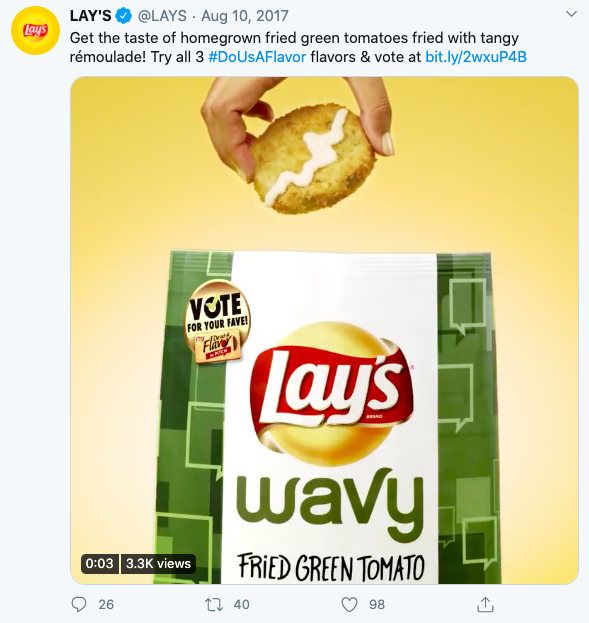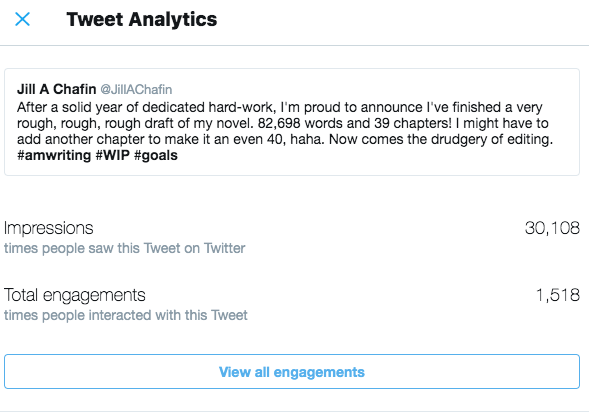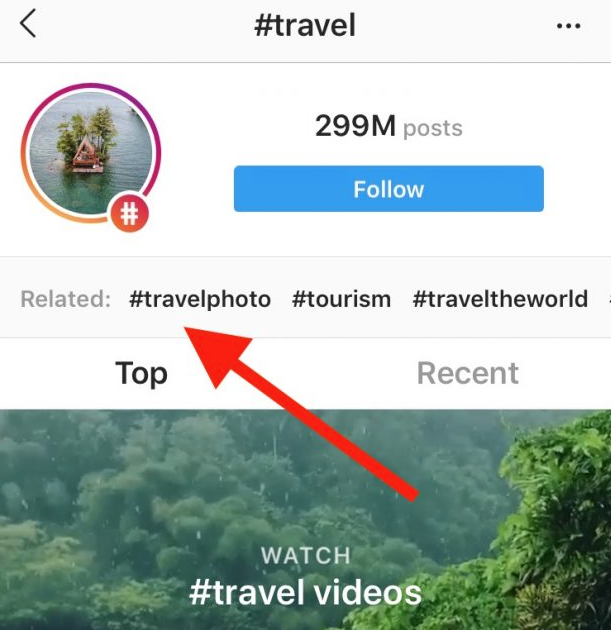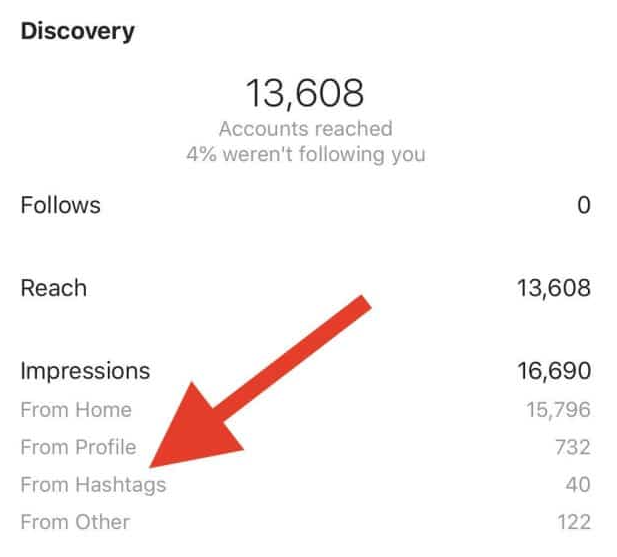You’ve most likely experimented with hashtags in the past, either on personal posts or by stringing together a few keywords in hopes of boosting a social media campaign. And yet you’ve probably wondered, is the pound symbol really necessary?
Even though the hashtag may seem small and insignificant, it’s actually quite powerful. But the real effectiveness is in relevant hashtags. It’s important to think about which hashtags are going to inspire people to share and share again. How do you make each post stand out from the millions of others out there?
An effective hashtag makes people pause, take notice, and respond -- either by sharing, retweeting, or investing in your business. This, in its purest form, is engagement marketing at its finest.
Overview: What are hashtags?
The hashtag is represented by the pound or hash symbol, technically referred to as the octothorpe. This ordinary symbol was revolutionized in the summer of 2007 by Twitter employee Chris Messina.
Messina’s idea was simple: to use the hashtag to group together related tweets and topics. This allowed a single tweet to reach hundreds, thousands, or even millions of users -- including strangers from across the globe. Needless to say, the hashtag took the world by storm, expanding to other platforms such as Instagram, Facebook, and now even LinkedIn.
The hashtag ultimately allows people to connect on shared topics and passionate missions -- such as expanding awareness about global social movements. Heck, it’s even a great way for friends and family to quickly view your baby’s adorable pictures on Instagram.
But most importantly, the hashtag helps boost your business’s social media content. With a few clever hashtags sprinkled in, you’ll inspire users to engage in organic conversations about your brand and products, thus generating more interest in your business.
Even though slapping on a dozen or so hashtags to the end of every post can be addictively fun, there is a fine art to the whole process. Let’s take a deeper look.
The 4 types of Instagram and Twitter hashtags
We’re mostly going to discuss Instagram and Twitter since these two platforms are in the lead with hashtag-generated social media engagement. However, in theory you can take these tips and head over to Facebook and LinkedIn. And although those platforms don’t generate as much interest via hashtags, it’s still worth using the hashtag wherever you go.
1. User-generated
Hashtags are a key component of user-generated content. This is where you create a catchy hashtag for users to include in their posts regarding your business or products. In return, this allows your audience to do the hard work of promoting your brand, all in the form of real engagement.
Start by examining current trending hashtags and tweaking them to fit your specific business model. Just make sure to keep the tone natural and authentic; if you go too hard, it’ll come across as cheesy or aggressive, which is a sure way to repel potential customers.

Lay’s creates its own hashtag, along with a poll to generate user interest in its products. Image source: Author
Creating a specific hashtag for your brand is a fantastic way to generate interest. Make sure to include incentives such as a simple contest that involves sharing or retweeting your post. Most people are more than happy to jump on board with sharing your post if free stuff is at stake.
2. Events
You can piggyback with popular events such as tagging #SuperBowl with your specific brand of food -- which, of course, is the perfect snack for a big party. You can also use strategic hashtags to promote your own events such as #event, #party, #music, #food, or whatever else will be offered there.
Don’t forget to include local hashtags for in-person events. You can include the city name, state, or even the building’s name if it’s hosted at a specific restaurant. Remember, the more you narrow in on the details, the more people you’ll reach.
For example, if an upcoming event is hosted at a local community center and hundreds of people follow that community center, you’ll expand your reach by simply including that hashtag.
3. Branded
Obviously you want to include a business hashtag to link all your content together. That way people can easily find your posts with a quick click.
In addition to including your business name, aim to include one or more of the following:
- Industry: This is making a broad statement to what you offer such as #photographer.
- Niche: Take it to the next level by narrowing your level of expertise as in #weddingphotographer, #familyphotographer, or #birthphotographer. Feel free to include as many niches as you’d like, as long as you’re skilled in the mentioned areas.
- Campaign specific: Sometimes brands will run a direct campaign that’s geared toward one aspect of their business. For example, Expedia hosts a weekly chat called #ExpediaChat. This allows users to see all the past chats by simply typing in that hashtag. It’s also a great way to encourage regular communication and participation, thus broadening awareness of the brand.
Focus on keeping your message natural and inviting. You want to avoid conceited, self-centered phrases, such as #BuyOurBrand. Instead work on creating unique slogans and stuff that’s catchy and easy for users to remember.
4. Unbranded
You’d think that the best way to promote your business is to highlight your brand’s name in every post. Well, that’s not always the case.
Let’s look at a popular example. In 2015, REI closed all of its stores on Black Friday, paid its 12,000+ employees to get outdoors, and invited the rest of America to join in on some adventurous fun.
Many people would have said this was a poor move, especially since Black Friday is one of the most popular shopping days of the year. However, with a simple hashtag of #OptOutside, REI attracted responses from 1.4 million people and 170 organizations worldwide.
Your goal is to create a movement with your hashtag. With enough momentum and excitement, the hashtag will grow and grow, drawing in more dedicated followers. Who knew the simplicity of words could be so powerful?
How to find the best Instagram and Twitter hashtags for your small business
Delving into hashtag research isn’t as complicated as brain surgery. In fact, it’s fairly simple and more like learning which type of Band-Aid to use for each situation and then putting it to good use.
Here are four easy steps to get you started:
- Define your audience.
- Understand your competitors.
- Research trends and related tags.
- Analyze the data.
These steps are straightforward and easy enough for your marketing team to tackle. However, if you feel overwhelmed, try using a social media management tool to help guide you along the way.
Don’t forget to set up your social media content calendar while you’re at it -- this will make sure that you don’t fall behind or neglect your social media presence.
Feeling ready? Let’s do this.
1. Define your audience
Your first step in hashtag research is to understand your target market. There’s no point in pouring all your advertising dollars into Twitter if your potential customers are hanging out on Instagram.
You can gain more insight by researching social listening, which is a service you can access with a social media tool. For example, Sprout Social can help search and fine-tune relevant hashtags to fit your target audience, plus they’ll track post-performance analytics.
The main goal is to reach out to those who are most likely to engage with you. Here’s a personal example: I recently wanted to connect with other writers on Twitter in anticipation of my novel’s publication. I posted an update about my progress, along with the hashtags #amwriting, #WIP (work-in-progress), and #goals. That single Tweet resulted in 30,108 impressions and a total engagement of 1,518.

Announcing a milestone with a few key hashtags can generate a lot of engagement. Image source: Author
Once you discover how to authentically connect and engage with your target audience, the wording of your hashtags will become more natural and free-flowing.
2. Understand your competitors
Start by gathering information about the competitors in your industry. This will help guide your campaign to be more in alignment with what’s currently working for others.
Here are a few steps you can take:
- Join the platforms: Consider joining your target platform by creating personal Twitter and Instagram accounts. This will allow you to see which ads jump out. Over time, you’ll start to get a feel for which hashtags are used on each platform.
- Scan similar posts: Think about the types of posts and hashtags you’ll use to promote your business. Dig around and see what others include in their list of hashtags. Pay attention to hashtag count, too. For example, it’s recommended to use one to two hashtags on Twitter, but up to 30 on Instagram.
- Run a competitive analysis: Hootsuite is a versatile social media management tool, and it even offers a free account level. Here Hootsuite discusses how to run a competitive analysis, helping you understand the depth of your competitor’s strengths and weaknesses and how they compare to your business.
3. Research trends and related tags
Keeping up with the latest social media trends is a job in itself. But knowing the most popular Instagram hashtags, for example, should be a key component of your social media strategy.
There are many tools available to help hone in on the most popular hashtags. Start by using your social media accounts to gather more information, such as checking out the trending tool on Twitter.
Here are three popular services to consider:
- Trendsmap: Helps create content around national trending topics, or relevant hashtags related to your local area. It’s currently only available for Twitter.
- Hashtagify.me: Discover trending hashtags and fine-tune your message to reach the most appropriate audience on both Twitter and Instagram.
- RiteTag: Based on real-time hashtag engagement, you can quickly find the perfect words to include with your social media posts.

You can find related hashtags listed near the top of the Explore section of Instagram. Image source: Author
Once you’ve got a good grasp on the keyword hashtags, start branching out to include related hashtags. These tend to be more specific and detailed than the popular, trending hashtags. However, they’ll help expand your reach to people searching for those terms.
And don’t forget to take advantage of holidays on social media. There are the usual ones, such as #NewYearsDay and #ValentinesDay, but there are also unique ones like #GetToKnowYourCustomerDay (January 16) and #NationalSelfieDay (June 21). Work those to your advantage by offering cool prizes for the best selfies submitted with your brand’s hashtag.
4. Analyze the data
It’s important to analyze your hashtag performance. Otherwise you won’t know which ones were actually successful. Remember, knowledge is power. The more you know, the more you can keep creating awesome, inspiring, and engaging hashtags.

Instagram Insights shows how much interest was generated by hashtags. Image source: Author
Make sure to upgrade to an Instagram Business account, which will allow you to access Instagram Insights. From there you’ll be able to access data showing hashtag engagement, plus many other tools.
A Twitter business profile is also important to take full advantage of the marketing tools. Read more about how to enhance your Twitter account to maximize your advertising efforts.
Tips for optimizing your Instagram hashtags
Instagram is a hot place for growing and expanding your business. One reason it’s got a slight advantage over Twitter is that Instagram’s primary focus is on photos. Therefore, you’ve got the perfect opportunity to showcase your most inviting, flashy, high-quality photos to a wide audience.
1. Stay relevant
You need to keep on top of hashtag trends in order to show up in people’s searches. The maximum limit for hashtags on Instagram is 30. And although 30 hashtags may seem like an absurdly high number, if you can make them all fit the post, then go for it!
Just make sure to avoid throwing in hashtags that don’t fit at all, even if they’re popular and high-ranking ones. Also, there’s an option for people to hide specific hashtags, which could result in that post being hidden in future searches.
Above all, don’t falsely advertise yourself. For example, if you include #skydivingphotographer in a post, then you should be fully prepared to jump out of a plane with your camera strapped on!
2. Get inspiration from the Explore Page
If you’re feeling stuck, head over to the Instagram Explore page. Here you’ll find posts that are high-performers. It’s a great way to discover some cool, effective, and inspiring hashtags.
Be sure to stick to topics that are similar to your business model. For example, I teach a dance class for kids, and if I use the hashtag #kidsdanceclass, it shows 24.9K posts. That’s a lot of competition!
However, if I click on one of the videos on the Instagram Explore page, I see a list of cool hashtags to include:
- #motivationmondays
- #youngdancers
- #dancepractice
- #instadancer
I can also add #onlinedanceclass with the above options, helping my post stand out even more.
3. Analyze performance
The best way to fine-tune any social media campaign is to analyze previous posts and take note of which ones generated the most interest. Check out our ultimate guide to understanding Instagram Analytics. Remember, all that data will help to point your next campaign in the right direction.
And don’t be afraid to experiment with your Instagram ads. Try new approaches, various images, and catchy hashtags. With enough analysis, you’ll see which methods prove to be the most fruitful.
Get creative and see where the hashtag takes you.
A powerful hashtag can revolutionize your business
Even though hashtags seem like a quick afterthought or a simple summary of your post, they are incredibly powerful. They’re the key to connecting random people across the globe and inspiring them to invest in your business.
Try brainstorming on a unique hashtag that can engage users in an authentic way, such as REI’s #OptOutside campaign. Or come up with a catchy hashtag that takes advantage of a random holiday, such as #WorldSmileDay (October 2).
Talk about the perfect opportunity to get people posting smiling pictures with your business’s hashtag attached! It will convey the message that they adore your brand, which is some pretty slick marketing!
Our Small Business Expert
We're firm believers in the Golden Rule, which is why editorial opinions are ours alone and have not been previously reviewed, approved, or endorsed by included advertisers. The Ascent, a Motley Fool service, does not cover all offers on the market. The Ascent has a dedicated team of editors and analysts focused on personal finance, and they follow the same set of publishing standards and editorial integrity while maintaining professional separation from the analysts and editors on other Motley Fool brands.